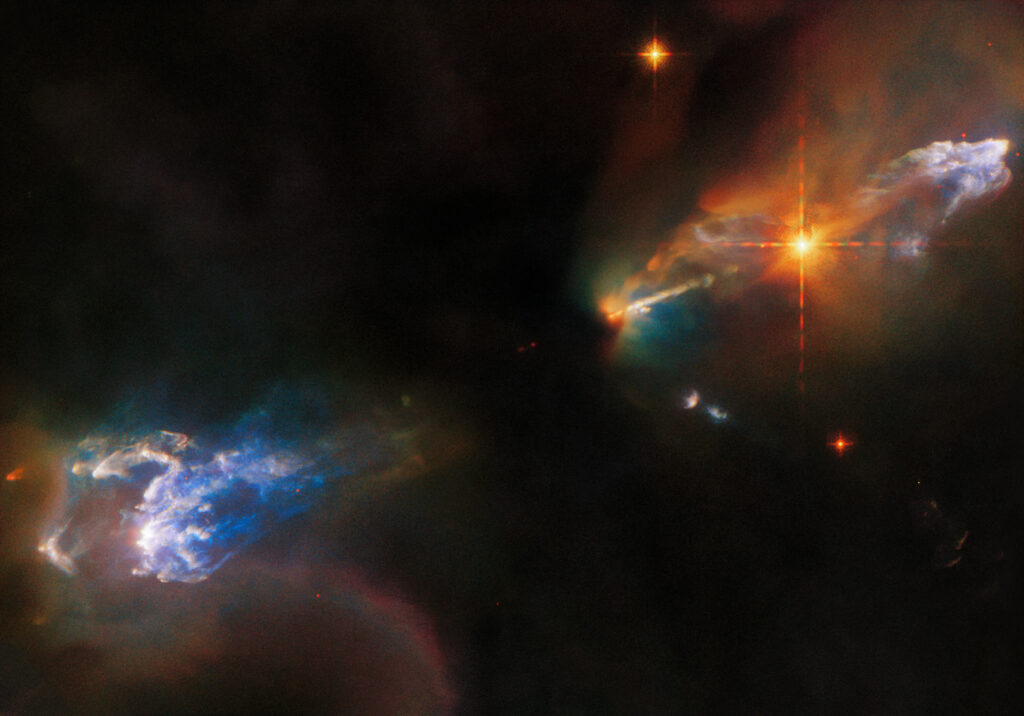Newborn stars are often characterized by very violent behavior, which is demonstrated by the presented image taken by the Hubble telescope. On it you can see two characteristic structures resembling clouds, which are called Herbig–Haro objects.

Herbig–Haro objects are the product of the activity of recently formed luminaries, still surrounded by protoplanetary disks. Under some circumstances, their interaction with matter from the disk can lead to the formation of jets consisting of ionized gas. As a result, the young star begins to throw matter into the surrounding space.
This matter moves at a considerable speed, reaching several hundred km/s. Its interaction with gas-dust clouds leads to the formation of characteristic shock waves, which are called Herbig–Haro objects. Their length can reach ten light-years. It is also worth saying that Herbig–Haro objects are a very short-term phenomenon by astronomical standards. In just a few tens of thousands of years, they completely dissipate in interstellar space.
In the Hubble image, you can see two Herbig–Haro objects. These are bright clouds in the upper right and lower left part of the frame. They are located in the Orion nebula, one of the closest stellar maternity hospitals to us, located at a distance of 1,250 light-years from Earth. According to Hubble measurements, the substance in the objects moves at a speed of about 400 km/s.
As for the young star system, which is the source of matter emissions, it is hidden by thick dust clouds in the center of the image. Previously, astronomers believed that one of the Herbig–Haro objects was produced by a bright star in the upper right part of the image. But subsequent observations showed that it had nothing to do with it.
According to https://esahubble.org
Follow us on Twitter to get the most interesting space news in time
https://twitter.com/ust_magazine

